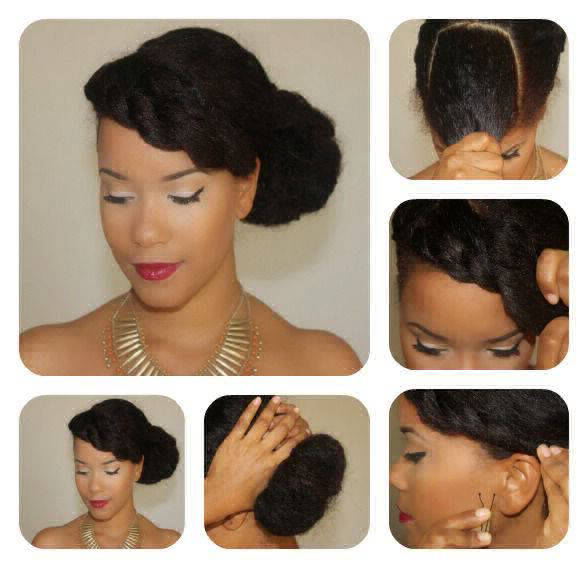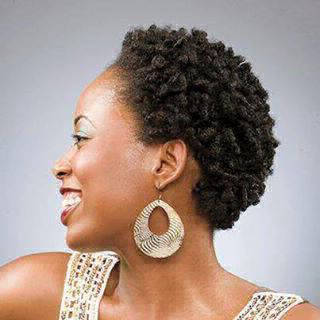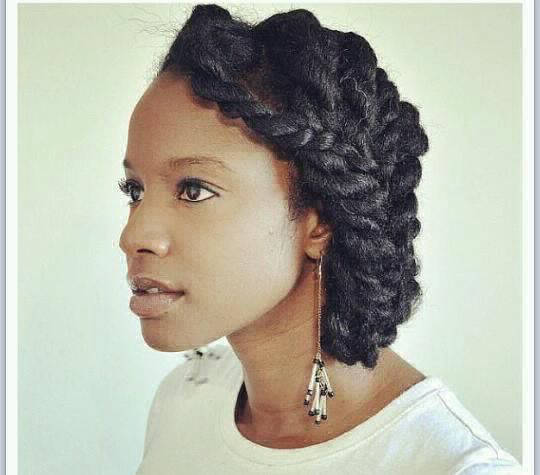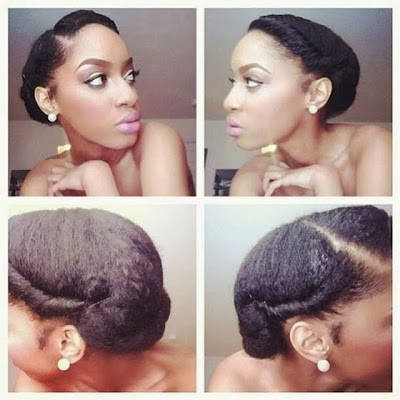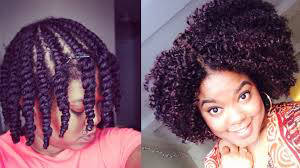
The Daughters of Sarah
For Repentant Israelite Women

Growth tips and Protective Hair Styles
for thinning /sparse edges
Thinning edges are no joke! Besides the not-so-nice look they give your hairline, it is also very hard to rock them without the know-how. Even though genetics play a huge role on the thickness and strength of your hair, there are some tips which you can apply to boost hair that has been damaged through high manipulation, stress and negligence. Worry no more; we got you!
1. Leave them alone!
This is the first rule of rocking thinning edges and getting them back to health if possible. The most obvious step to achieve this is stopping the use of tight hairstyles whatever they might be immediately: tight ponytails,buns, braids, sew ins. Try low manipulation hairstyles. A twist/braid out might save your life in this case if you are able to discover the secret to keep it for at least a week without manipulating your hair everyday… You can also do loose twists or mini twists with your own hair. Pin and tuck hairstyles are ideal for the less affected folks as it looks professional, tidy and you can rock it for a week with no issues if you use a good satin scarf every night then take it out in the morning! You can also rock braids with extensions as long as you leave the fragile baby hairs out if your edges are that not damaged. If your case is too bad (Naomi Campbell style) avoid braids with extensions like the plague! Finger coils are amazing too, just use a satin bonnet overnight to keep them fresh then spray a little water in the morning and you should be good to go! Even buns are allowed if done loosely too. (See hairstyle ideas at the end of this article)

2. Put that grease down!
Do not use grease on your hairline (Dax pomade and waxy products are good examples) this will only cover up your pores avoiding them to breathe thus reducing chances of regeneration and growth. Mineral oil, Vaseline and Petroleum Jelly are ingredients you should avoid completely. Try vegetable oils known to increase and stimulate hair growth instead such as castor oil. You can dilute it with other lighter oils of your choice and apply a little every other day to your hairline (do not overdose even though is a natural cure it can still build up). Be aware that even though castor oil is widely known for its hair growth stimulation qualities are it still might not work for you or your lifestyle! Just make sure you make your research if that’s the case, there are a myriad of concoctions in the Internet.

3. Use a satin scarf, bonnet or satin pillowcase when going to bed
You might hear this a lot of times! But even though it sounds simple it is one of the most important secrets to grow and keep your edges. Satin and silk are super smooth and only absorb little of the moisture present naturally on your hair whilst cotton and other fabrics dry your hair. Dry hair becomes brittle over time and breakage takes place quickly. Make sure you use a satin or silk head scarf and that whenever using a satin or silk bonnet it has a smooth hem without elastic. Most satin bonnets with an elastic on the hem tend to pull on your hair run away from them. If you cannot find the smooth hems on the beauty supply store you will surely get hold of one online! A satin or silk pillowcase is also a good option.

4. Leave the blow dryer/flat iron and other heat tools in the cupboard!
Remember those biology classes you probably hated (or loved in my case)? Heat causes protein denaturation (degrades protein) and keratin is a type of protein that forms the main structure of hair strands. Each protein has a denaturation threshold which decreases as the temperature applied increases. At approximately 233 C or 451.4 F, the hair’s keratin begins to melt. Most thermal styling tools operate in the 100-170 C (212-338 F) range. Hair that has been previously processed can be damaged at lower temperatures than this as it’s more fragile (example: harsh hair colour treatments) When you see it this way is quite understandable why you should ditch heat on your sparse edges. They are already too fragile and heat will only aggravate the problem. If you cannot wait for your hair to air dry use a microfiber towel which does not cause much frizz to soak up most of water before styling your hair.
5. Avoid hard setting gels, hair sprays and drying alcohols
As strange as it may sound hard setting products are not advised for thinning edges because they make hair brittle and dry in order to stay in place. Even though they are not damaging when used sparingly on healthy edges they can be super destroying on sparse edges. Try to use healthier alternatives to hard gels be it soft hold alcohol free varieties (Some EcoStyler gels) or natural light hold versions like Flaxseed/Linseed gel and Aloe Vera gel. Some types of alcohols present in hair products are bad for your hair because they also make it dry. The most common bad alcohols are SD Alcohol 40, Ethanol, SD Alcohol, Propyl, Porpanol and Isopropyl

6. Moisture, moisture, moisture
Dry hair is brittle and prone to breakage whilst moisturised hair is flexible and is much harder to break. So make sure you mist your edges with some real water every day, use a light oil to seal it every other day avoiding build up, use good quality moisturisers (Butter Me Up! Hair Styling Crème Brûlée is a great example) and deep condition at least once a week.

7. Stick to the healthy clichés
You know them all: eat a well balanced diet full of vitamins, minerals, protein and everything your body needs (I follow Leviticus 11 and it’s been working for me!) avoid stress whenever possible making “me” time (relax when you can), drink plenty of water, avoid processed foods, excessive sugar, salt, fat and harsh chemicals on food and cosmetics. Stop smoking and avoid being a passive smoker.
